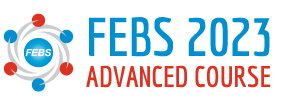
Home
Programme
Preliminary Programme
For this advanced course, six highly relevant and related topics have been selected:
- Amyloid structures: Recent structural analysis suggests a molecular basis for amyloid polymorphism and alternative concepts for amyloid formation.
- Chaperones in amyloid formation: Molecular chaperones are an important cellular target to control pathogenic amyloid formation and possibly amyloid clearance.
- Membrane-less organelles: Membrane-less compartments in cells (LLPS) may promote protein fibrilization in neurodegenerative and related diseases.
- Lipids and membranes in amyloid formation: Lipids/lipid membranes provide a hydrophobic surface which can catalyze the formation of amyloid(like) structures.
- Functional amyloids: Functional amyloids reinforce the emerging concept that the amyloid fold is capable of carrying out a diversity of (biological) functions.
- Pathology of amyloids: Amyloids are observed in neurodegenerative and age-related diseases. The molecular basis for toxicity of amyloids is poorly understood.
Schedule
|
Morning |
Afternoon & Evening |
|
|
September 1 |
Arrival and Welcome |
|
|
September 2 |
Amyloid structures |
Poster session A |
|
September 3 |
Chaperones |
Poster session B |
|
September 4 |
Condensates |
Excursion |
|
September 5 |
Lipids & Membranes |
Poster session C |
|
September 6 |
Functional Amyloids |
Poster session D |
|
September 7 |
Amyloid Pathology |
Poster session A |
|
September 8 |
Departure |
|
Speakers Lecturers
Simon Alberti- Biomolecular condensates at the nexus of stress, disease and ageing
- Chaperone action on amyloids
- Alpha-Synuclein fibril strains: Decoding Strain Transformations and their possible role in Parkinson's disease.
- (Dis)functional membrane interactions of the intrinsically disordered protein alpha-synuclein.
- Intrinsically disordered proteins as drug targets
- Interactions and regulation of disordered proteins
- Cellular landscapes of protein interactions.
- Sequence-based determinants of aggregation within protein condensates.
- Lipid changes associated with alpha-synuclein and Parkinson’s Disease pathology
- Strategies to prevent and revert apha-synuclein aggregation and lipid changes associated with Parkinson’s Disease
- Regulation of autophagy by lipid-mediated protein oligomerization
- Biophysical principles of chaperone-client interactions resolved at the atomic level
- Regulation of dynamic chaperone interactions networks and functional cycles
- Biophysical approaches to study molecular mechanisms of Alzheimer’s disease that involve lipids
- Molecular mechanism of Alzheimer’s disease: towards drug development
- Cooperative biniding of α-synuclein to membranes. Mechanism of membrane-induced α-synuclein aggregation and the associated protein-lipid co-aggregation
- Engineering the self-assembly of functional amyloids; from the molecule to hydrogel for healthcare applications
- Proteostasis Collapse in Aging and Neurodegenerative Disease
- Functional amyloids in bacteria: mechanisms and microbiology
- Pathological protein oligomers in conformational diseases
- Seeing amyloid: beautiful structures and toxic mechanisms
- Heterotypic Amyloid interactions and their effect on amyloid assembly
- Evolutionary imprints of protein aggregation on protein structure and chaperone interactions
- The cellular protein folding machinery
- Chaperone control of Tau fibrils
- Structure determination of amyloids by helical reconstruction of cryo-EM images
- Cryo-EM structures of tau filaments in neurodegenerative disease
- Protein Folding 2.0: How molecular chaperones reverse and protect against amyloid aggregation
- The diverse nature of functional amyloids: from bacteria to humans.





